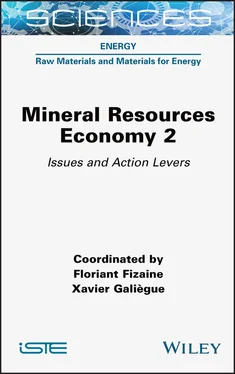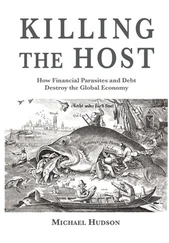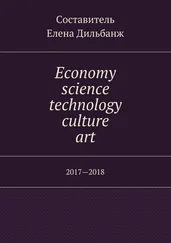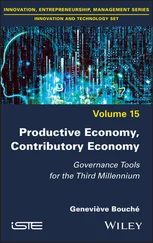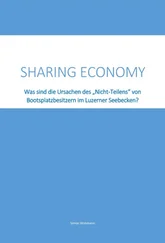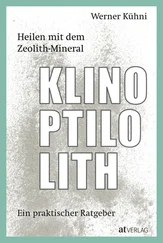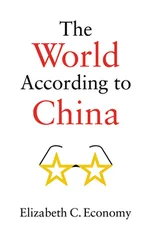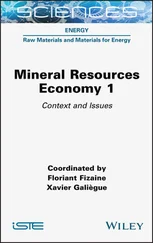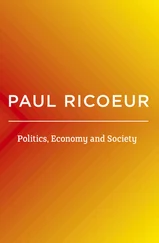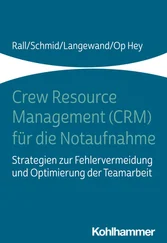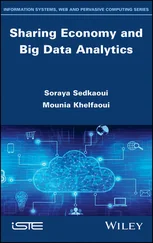1 Cover
2 Title Page SCIENCES Energy , Field Directors – Alain Dollet, Pascal Brault Raw Materials and Materials for Energy , Subject Heads – Olivier Vidal and Frédéric Schuster
3 Copyright First published 2021 in Great Britain and the United States by ISTE Ltd and John Wiley & Sons, Inc. Apart from any fair dealing for the purposes of research or private study, or criticism or review, as permitted under the Copyright, Designs and Patents Act 1988, this publication may only be reproduced, stored or transmitted, in any form or by any means, with the prior permission in writing of the publishers, or in the case of reprographic reproduction in accordance with the terms and licenses issued by the CLA. Enquiries concerning reproduction outside these terms should be sent to the publishers at the undermentioned address: ISTE Ltd 27-37 St George’s Road London SW19 4EU UK www.iste.co.uk John Wiley & Sons, Inc. 111 River Street Hoboken, NJ 07030 USA www.wiley.com © ISTE Ltd 2021 The rights of Florian Fizaine and Xavier Galiègue to be identified as the authors of this work have been asserted by them in accordance with the Copyright, Designs and Patents Act 1988. Library of Congress Control Number: 2021940276 British Library Cataloguing-in-Publication Data A CIP record for this book is available from the British Library ISBN 978-1-78945-025-5 ERC code: SH1 Individuals, Markets and Organisations SH1_12 Agricultural economics; energy economics; environmental economics PE10 Earth System Science PE10_10 Mineralogy, petrology, igneous petrology, metamorphic petrology
4 Introduction Introduction Florian FIZAINE1 and Xavier GALIÈGUE2 1 IREGE, Savoie Mont Blanc University, Annecy, France 2 LEO, University of Orléans, France We have seen in Volume 1 of this book that the context of mineral resources involves strong interactions between the material and physical constraints of extractive industries and those of the economy and social representations. These interactions are now strong enough for us to consider that we have already entered a new geological era, the Anthropocene era, in which the metabolism of the planet is shaped by human activity. However, unlike other geological eras, if the Anthropocene generates evolutions that are unintentional consequences of human activities, these could be voluntarily influenced – on the condition that public opinion becomes aware of this and assumes the consequences of voluntarist policies in this field. A large part of this volume, Volume 2, will be devoted to examining the leverage available to us to make the energy transition compatible with the use of our mineral resources. However, before examining them, it will also be necessary to address a number of issues related to the legal regimes governing access to mineral resources, the geopolitical interactions between producing and consuming countries and the impact of extractive activities on populations.
5 PART 1 Stakes PART 1 Stakes
1 Toward a New Geopolitics of Raw Materials in the Energy Transition
1.1. Introduction
1.2. Measuring the criticality of raw materials and geopolitical risk
1.3. The geopolitics and geo-economics of raw materials in the energy transition
1.4. How can we manage strategic materials supply risk?
1.5. Conclusion: toward a new resource nationalism?
1.6. References
2 Legal Issues Regarding the Sustainable Management of Territorial and Extraterritorial Mineral Resources
2.1. National law regarding territorial mineral resources: the decisive issue of ownership
2.2. International law regarding territorial mineral resources: the central role of state sovereignty
2.3. International law regarding extraterritorial mineral resources: exploitation “for the benefit of mankind as a whole”
2.4. For a sustainable management of mineral resources
2.5. References
3 Mining and Societies
3.1. Introduction
3.2. Mines as a factor of settlement and landscape transformation
3.3. Mining in the Industrial Age
3.4. Contemporary mining transformations and challenges
3.5. Conclusion
3.6. References
6 PART 2 Action Levers
4 Maintaining or Even Developing the Mining of Mineral Resources in Europe: The Case of Wallonia (Belgium)
4.1. Introduction
4.2. Geological resources in Wallonia
4.3. Extension of sites/quantity of mining?
4.4. Decrease in sites/quantity of operations
4.5. Some levers for action
4.6. Conclusion
4.7. References
5 Substitution: Promises, Principles and Main Constraints
5.1. Introduction
5.2. Main economic foundations of substitution
5.3. Elements, components, systems: what are we really substituting?
5.4. The main obstacles to substitution
5.5. Other aspects to be taken into account
5.6. References
6 Resource Consumption and Decoupling
6.1. Introduction
6.2. Global use of resources
6.3. Material consumption indicators
6.4. Decoupling the economy from resource consumption
6.5. Responsibility for resource consumption
6.6. Conclusion
6.7. References
7 The Economics of Recycling: Ambitions, Myths and Constraints
7.1. The recycling economy, an ancient history
7.2. Geological and urban mines, similarities and differences in logic
7.3. Understand the definitions and indicators of recycling in order to express its performance
7.4. A limited deposit because we can only recycle what we have consumed
7.5. Multiple factors influencing recycling and its effectiveness
7.6. The technical constraints of metal recycling
7.7. Environmental benefits of recycling
7.8. Conclusion
7.9. References
8 Low-tech: A Path Toward the Necessary Metallic Sobriety?
8.1. Cornucopians versus doomsdayers
8.2. The circular economy, mission impossible?
8.3. Toward a metallic frugality
8.4. A possible and desirable transition
8.5. References
7 Conclusion
8 List of Authors
9 Index
10 End User License Agreement
1 Chapter 1 Figure 1.1.Raw material criticality measurement factors (source: adapted from H... Figure 1.2.China’s foreign direct investment in the metals sector (sources: Chi...
2 Chapter 3 Figure 3.1.Landscape of the Sierra de Gádor, near Almeria. Old lead mining, in ... Figure 3.2.Former mining site of the Carreau Wendel in the Lorraine coal basin.... Figure 3.3.Coal basins and terminals in Australia. For a color version of this ... Figure 3.4.The Chuquicamata copper mine in the Chilean Andes, 1988 (source: Des... Figure 3.5.The Chuquicamata copper mine in the Chilean Andes in 2018 (source: D... Figure 3.6.The Yanacocha Gold Mine near Cajamarca, Peru (source: Deshaies (2009...
3 Chapter 6 Figure 6.1.Global balance of material flows (socio-economic metabolism). The nu... Figure 6.2.World flows of in-use stocks, accumulated stocks and recycled materi... Figure 6.3.DMC and MF in tons per capita between 1990 and 2015 for different co... Figure 6.4.Relative and absolute decoupling of resource use from GDP. For a col... Figure 6.5.Relative change in DMC, MF and GDP between 1990 and 2015 for differe...
4 Chapter 7 Figure 7.1.Description of material flows in the metal cycle according to the UN... Figure 7.2.Example of the relationship between material consumption and the con... Figure 7.3.Illustrative recycling chain stages and efficiency rates. For a colo... Figure 7.4.Diagram of the electronic waste treatment process from UMICORE to Ho...
Читать дальше
